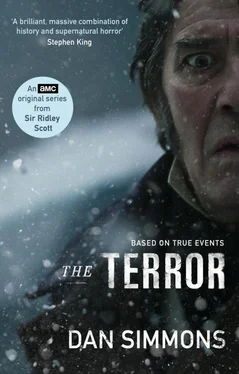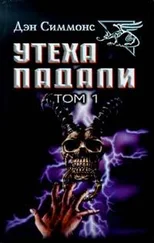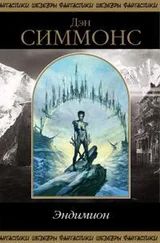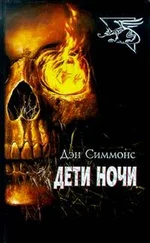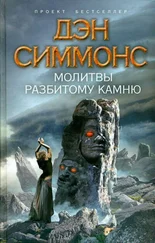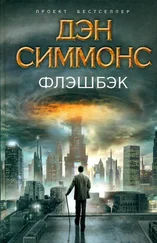Now it was late afternoon of their eighth day and they were looking down at HMS Terror . Even Asiajuk seemed intimidated and subdued.
Puhtoorak’s best description of the precise location had been that the three-stick house “was frozen in the ice near an island about five miles due west” of a certain point and that he and his hunting party “then had to walk about three miles north across smooth ice to reach the ship after crossing several islands on their walk from the point. They could see the ship from a cliff at the north end of the large island.”
Of course, Puhtoorak had not used the term “miles” nor “ship” nor even “point.” What the old man had said was that the three-stick kabloona house with an umiak ’s hull was a certain number of hours’ walk west of tikerqat , which means “Two Fingers,” which the Real People called two narrow points along this stretch of the Utjulik coastline, and then somewhere close to the north end of a large island there.
Crozier and his band of ten people — the hunter from the south, Inupijuk, was sticking with them to the bitter end — had walked due west across rough ice from the Two Fingers and crossed two small islands before reaching a much larger one. They found a cliff dropping almost a hundred feet to the ice pack at the north end of that large island.
Two or three miles out in the ice, the three masts of HMS Terror rose at a raked angle toward the low clouds.
Crozier wished he had his old telescope, but he didn’t need it to identify the masts of his old command.
Puhtoorak had been right — the ice for this last part of the walk was much smoother than the jumbled shore and pack ice between the mainland and the islands. Crozier’s captain’s eye saw why: there lay a string of smaller islands to the east and north, creating a sort of natural seawall sheltering this fifteen- or twenty-nautical-square-mile patch of sea from the prevailing winds out of the northwest.
How Terror could have ended up here, almost two hundred miles south of where she had been frozen fast near Erebus for almost three years, was beyond Crozier’s powers of speculation.
He would not have to speculate much longer.
The Real People, including the God-Walking People, who lived in the shadow of a living monster year in and year out, approached the ship with obvious anxiety. All of Puhtoorak’s talk of haunting ghosts and bad spirits had worked its effect on them — even on Asiajuk, Nauja, and the hunters who’d not been there to hear the old man. Asiajuk himself was muttering incantations, ghost-chasing chants, and keeping-safe prayers all during their walk out onto the ice, which added to no one’s sense of security. When a shaman gets nervous, Crozier knew, everyone gets nervous.
The only one who would walk next to Crozier at the lead of the procession was Silence, carrying both the children.
Terror was listing about twenty degrees to port, her bow aimed toward the northeast and her masts raking to the northwest, with too much of her starboard-side hull showing above the ice. Surprisingly, there was one anchor deployed — the portside bow anchor — its hawser disappearing into the thick ice. Crozier was surprised because he guessed the bottom to be at least twenty fathoms deep here — perhaps much more — and because there were little inlets all along the northern curves of the islands behind him. At the very least — unless there was a storm — a prudent captain seeking safe harbour would have brought the ship into the strait on the east side of the large island he’d just walked from, dropping anchor between the big island — whose cliffs would have blocked the wind — and the three smaller islands, none more than about two miles long, east of there.
But Terror was here, about two and a half miles out from the north end of that large island, with her anchor dropped into deep water and all of her exposed to the inevitable storms from the northwest.
One walk around the ship and a look up at her canted deck from the lower northwest side solved the mystery of why Puhtoorak’s hunting band had been forced to chop their way through the hull on the raised starboard side, probably a splintered and battered and already near-breached hull, in order to gain entry: all the topdeck hatches were battened and sealed.
Crozier returned to the man-sized hole the band had smashed into the exposed and weathered hull. He thought he could squeeze through. He remembered Puhtoorak saying that his young hunters had used their star-shit axes to force their way in here, and he had to smile to himself despite the surge of painful emotions he was feeling.
“Star shit” was what the Real People called falling stars and the metal they used from the falling stars they found lying on the ice. Crozier had heard Asiajuk talk about uluriak anoktok — “star shit falling from the sky.”
Crozier wished he had a star-shit blade or axe with him right now. The only weapon he carried was a basic work knife with a blade made from walrus ivory. There were harpoons on the kamatik but they weren’t his — he and Silence had left theirs with their qayaq a week ago — and he didn’t want to ask to borrow one just to go into the ship with it.
Back at that sledge, forty feet behind them, the Qimmiq — the large dogs with their uncanny blue and yellow eyes and souls they shared with their masters — were barking and growling and howling and snapping at one another and at anyone who came close to them. They did not like this place.
Crozier signed to Silence, Sign Asiajuk to ask them if anyone wants to come in with me .
She did so quickly, using just her fingers without string. Even so, the old shaman always understood her much more quickly than he could make out Crozier’s clumsy signs.
None of the Real People wanted to go through that hole.
I will see you in a few minutes , Crozier signed to Silence.
She actually smiled. Do not be stupid , she signed. Your children and I are coming with you .
He squeezed in and Silence followed a second later, carrying Raven in her arms and Kanneyuk in the soft-hide baby-holder she sometimes carried on straps against her chest. Both children were sleeping.
It was very dark.
Crozier realized that Puhtoorak’s young hunters had hacked their way in to the orlop deck. This was lucky for them since if they’d tried a bit lower amidships here, they would have run into the iron of the coal bins and the water-storage tanks on the hold deck and never could have chopped their way through, even with starshit heads on their axes.
Ten feet in from the hole in the hull it was too dark to see, so Crozier found his way by memory, holding Silence’s hand as they walked ahead down the canted deck and then turned aft.
As his eyes adapted to the dark, there was just enough light filtering in for Crozier to make out that the heavy padlocked door to the Spirit Room and to the Gunner’s Storeroom farther aft had been smashed open. He had no idea whether this had been the work of Puhtoorak’s men, but he doubted it. Those doors had been left padlocked for a reason and they were the first place any white men returning to Terror would want to go.
The rum casks — they’d actually had so much rum they’d had to leave casks of it behind when they took to the ice — were empty. But casks of gunpowder remained, as well as boxes and barrels of shot, canvas bags of cartridges, almost two bulkheads’ lengths of muskets still set in their grooved places — they’d had too many to carry — and two hundred bayonets still hanging from their fittings along the rafters and beams.
The metal in this room alone would make Asiajuk’s band of Real People the richest men in their world.
Читать дальше
